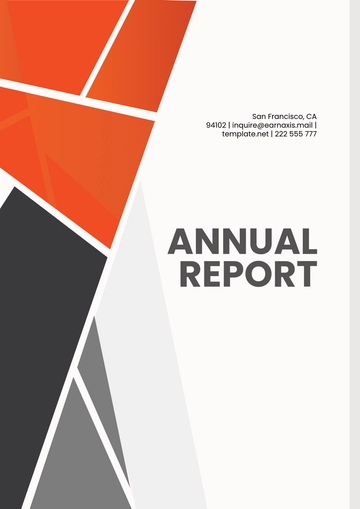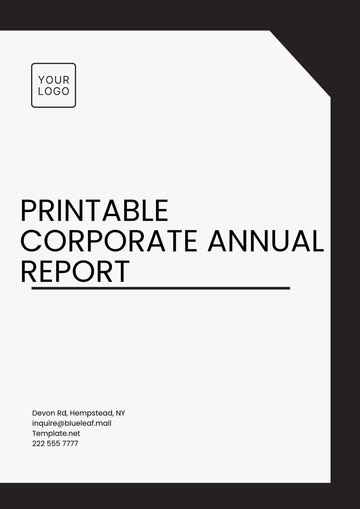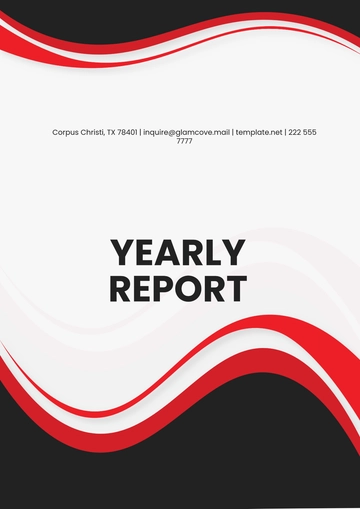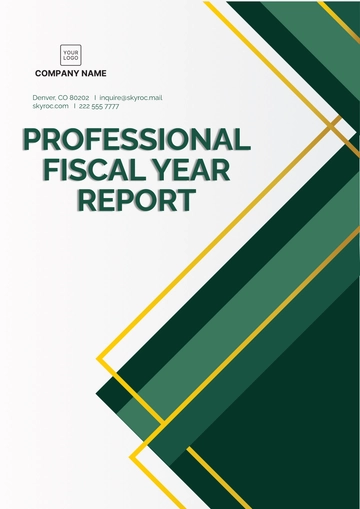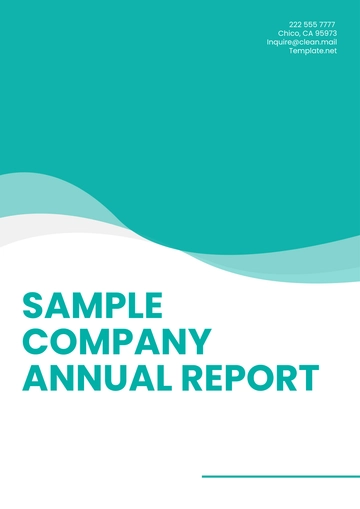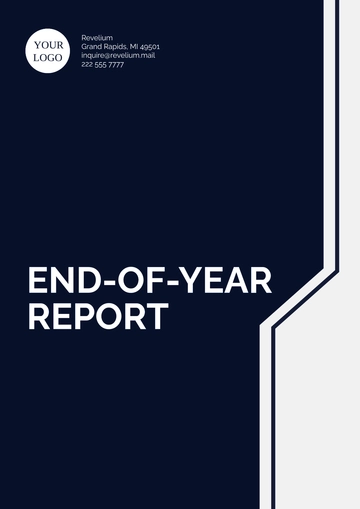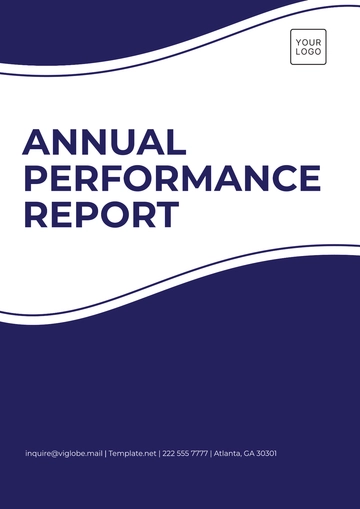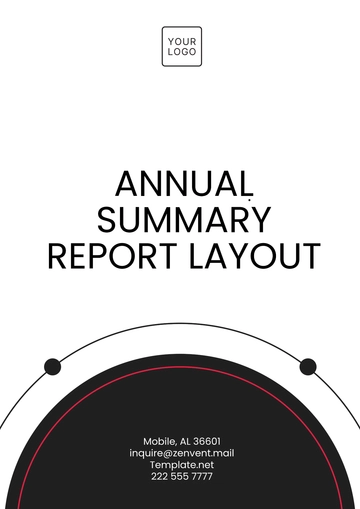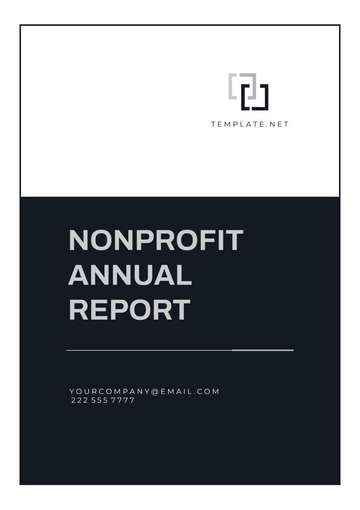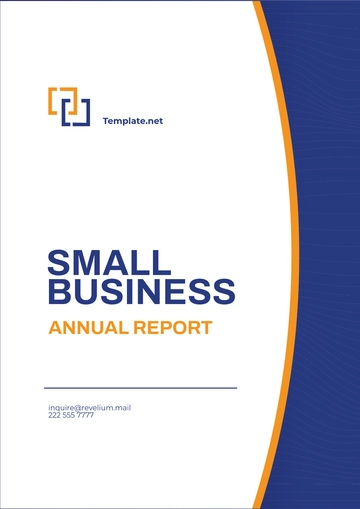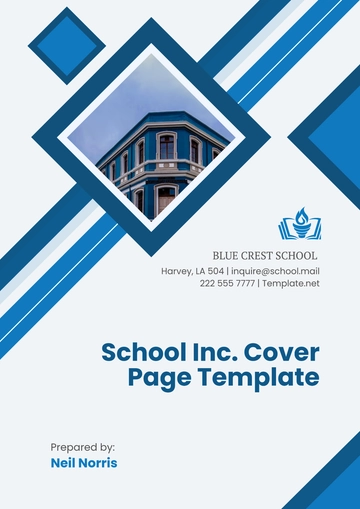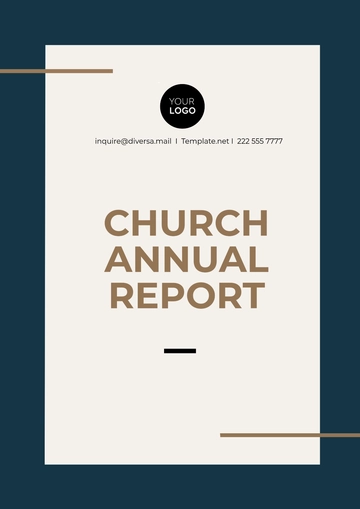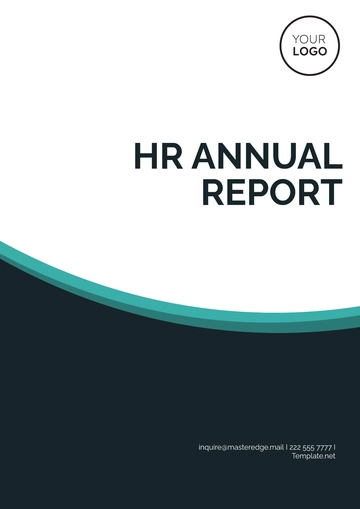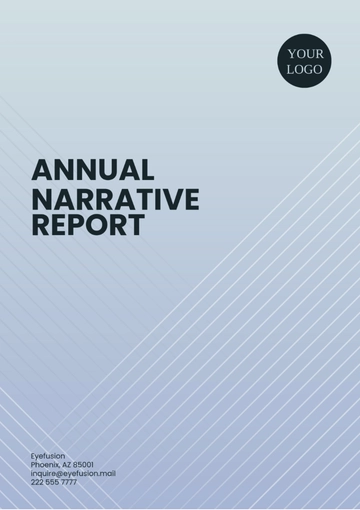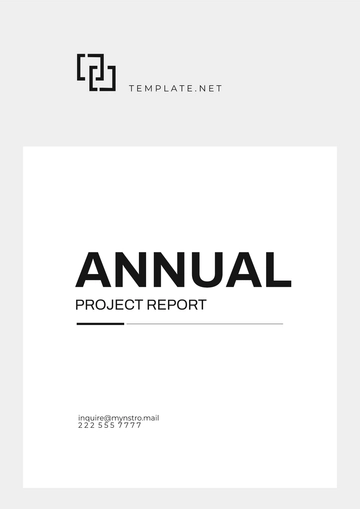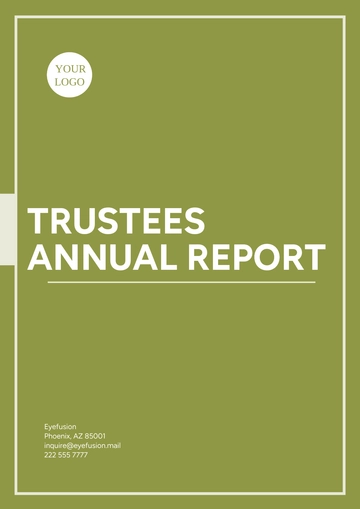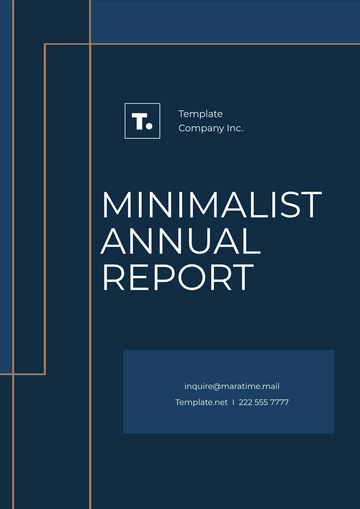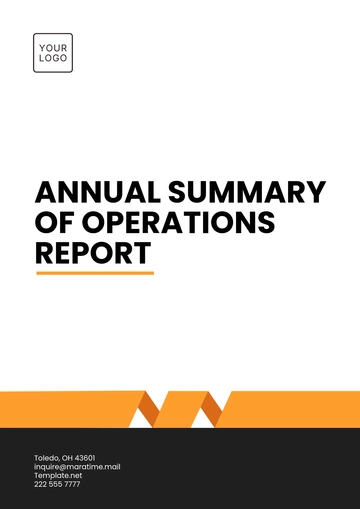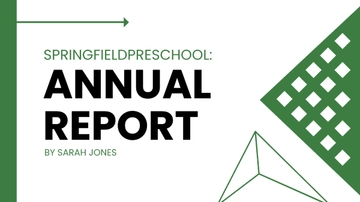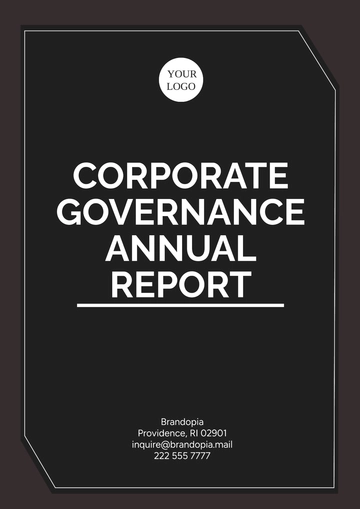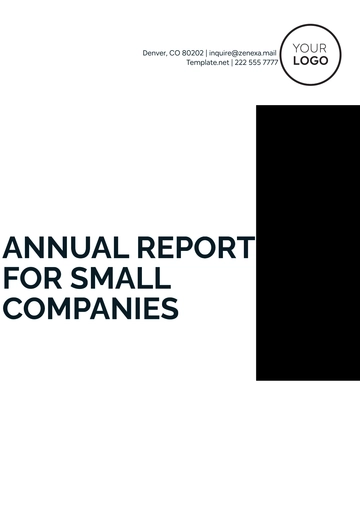Free Marketing Annual Media Outreach Report
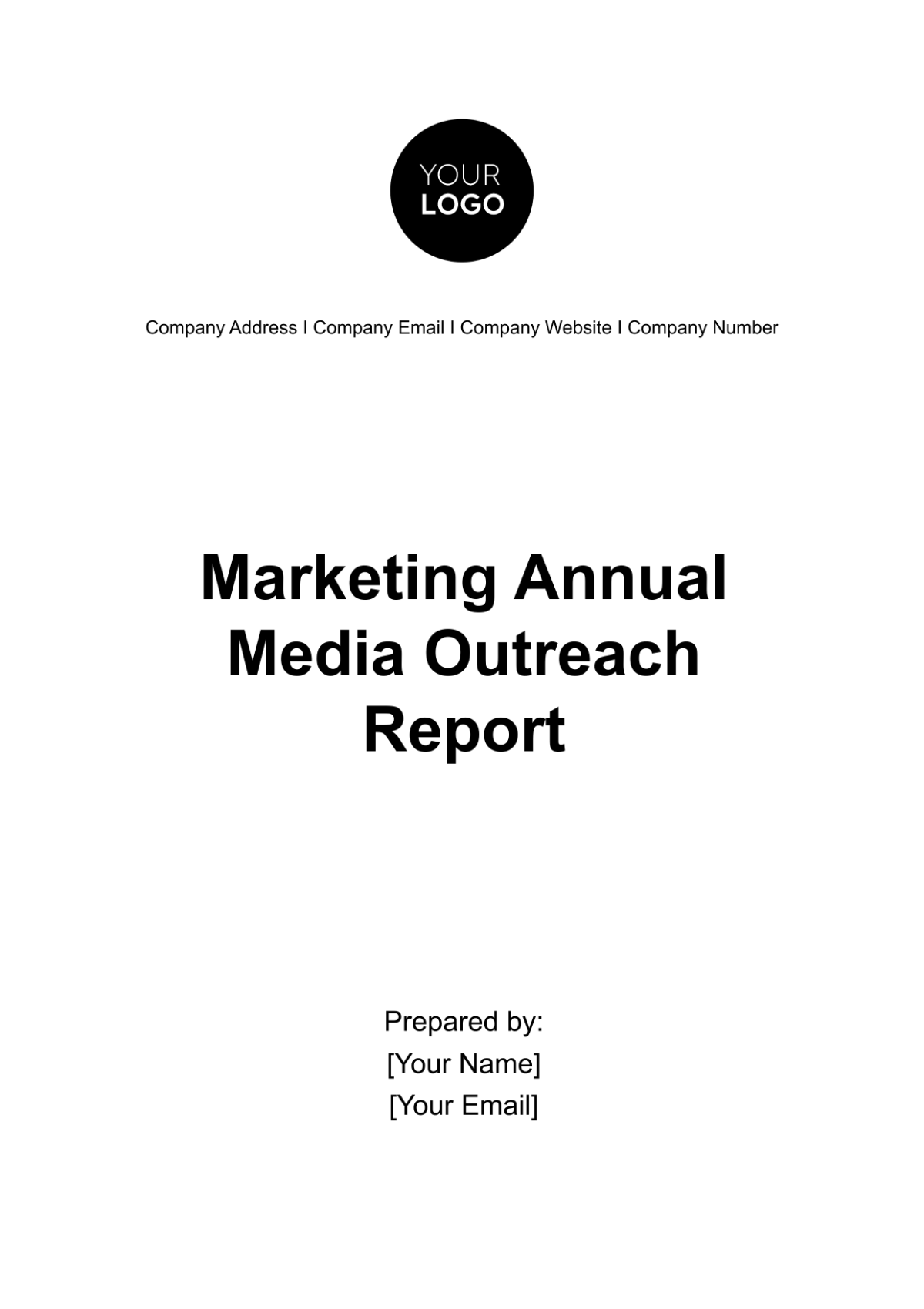
1. Executive Summary
This Marketing Annual Media Outreach Report offers a comprehensive examination of [Your Company Name]'s media outreach endeavors throughout 2055. The report meticulously details our strategies, accomplishments, encountered challenges, and critical performance metrics. Its primary purpose is to gauge the efficacy of our media outreach initiatives and assess our advancements in bolstering brand recognition, cultivating media coverage, and fortifying our market footprint.
Key Highlights
Company Overview: [Your Company Name] is a distinguished IT solutions provider, specializing in [mention areas of expertise], dedicated to innovation and client satisfaction.
Objectives: Our objectives for media outreach in 2055 encompassed:
Augmenting brand visibility and recognition.
Promoting [Product/Service Name].
Fostering thought leadership in the IT industry.
Nurturing relationships with key media channels and influencers.
Generating high-quality media exposure.
2. Introduction
This introductory section sets the stage for the Marketing Annual Media Outreach Report, providing essential context and an overview of [Your Company Name]'s media outreach efforts for the year 2055.
Company Overview
[Your Company Name] stands at the forefront of the IT industry as a distinguished provider of innovative IT solutions. With a strong foundation in [mention areas of expertise], we have consistently delivered cutting-edge technology solutions to our clients. Our unwavering commitment to excellence and customer satisfaction has made us a trusted partner for organizations seeking to harness the power of technology for their growth and success.
Objectives
The media outreach endeavors of [Your Company Name] in the year 2055 were guided by a set of strategic objectives aimed at enhancing our market presence and achieving meaningful engagement with our target audience. These objectives included:
Increase Brand Visibility and Recognition: To elevate [Your Company Name]'s profile within the industry, ensuring that our brand is top-of-mind among key stakeholders, including IT professionals, decision-makers, and potential clients.
Promote [Specific Product/Service]: To showcase the unique value proposition of [specific product/service] and position it as a leading solution in its respective niche.
Foster Thought Leadership in the IT Industry: To establish [Your Company Name] as a thought leader in the IT sector, contributing insightful perspectives on industry trends, challenges, and innovations.
Nurture Relationships with Key Media Outlets and Influencers: To cultivate and maintain strong partnerships with influential media outlets, industry bloggers, and thought leaders, fostering mutually beneficial collaborations.
Generate High-Quality Media Coverage: To secure media coverage that highlights our expertise, innovation, and contributions to the IT landscape, driving positive brand perception and attracting potential clients.
3. Media Outreach
Target Audience
Our media outreach initiatives in 2055 primarily targeted the following key segments within our audience:
IT Professionals
Description: This group comprises IT specialists, engineers, developers, and other technical experts who actively seek information about emerging technologies and solutions.
Engagement Approach: We aimed to engage this audience through technical content, including detailed product specifications, case studies, and in-depth analysis of industry trends. Webinars and tech-focused podcasts were also part of our strategy to cater to this audience's interests.
CIOs and CTOs
Description: Chief Information Officers (CIOs) and Chief Technology Officers (CTOs) are high-level decision-makers responsible for shaping their organization's IT strategies and investments.
Engagement Approach: To capture the attention of these key stakeholders, we focused on thought leadership pieces, strategic insights, and exclusive interviews with our company's leaders. We aimed to provide them with valuable insights and solutions that align with their business objectives.
Decision-Makers in Target Industries
Description: Decision-makers from industries such as [list industries] were vital to our target audience. These individuals play a pivotal role in selecting IT solutions that meet their industry-specific needs.
Engagement Approach: We tailored our outreach to address the unique challenges and opportunities within each industry. Industry-specific webinars, case studies, and whitepapers were developed to demonstrate our expertise in catering to their specific requirements.
General Technology Enthusiasts
Description: This group includes individuals who have a general interest in technology trends and innovations but may not have a direct professional affiliation with the IT industry.
Engagement Approach: We engaged this audience through informative and engaging blog posts, infographics, and social media content that made complex IT concepts accessible and interesting.
4. Challenges Faced
In the course of our media outreach efforts during the year 2055, [Your Company Name] encountered several challenges that posed both expected and unexpected hurdles. Understanding and addressing these challenges is crucial for refining our strategies and achieving greater success in the future. Here is a detailed account of the challenges we faced:
Challenge | Description | Impact | Mitigation |
Competitive Landscape | The IT industry is highly competitive, with numerous companies vying for attention. Our challenge was to stand out in a crowded marketplace and differentiate ourselves effectively. | Increased competition made it challenging to secure media coverage and maintain a consistent presence in the media. | We addressed this challenge by focusing on unique selling points, thought leadership content, and building strong relationships with media partners to ensure our stories were heard amidst the noise. |
Content Quality | Maintaining consistently high-quality content across various media outlets and channels was a constant challenge. | Subpar content quality could negatively affect our brand perception and hinder our efforts to engage the audience effectively. | We tackled this challenge by implementing stringent quality control measures, investing in content creation resources, and conducting regular content audits to ensure our messaging remained on point and engaging. |
Resource Constraints | Resource limitations, including human resources and time constraints, posed significant challenges. | Limited resources affected our ability to execute complex media outreach campaigns and maintain consistent engagement across all targeted channels. | To address this challenge, we optimized our workflow, prioritized high-impact activities, and explored outsourcing certain tasks to ensure maximum efficiency with the resources available. |
5. Key Performance Indicators
In this section, we delve into the key performance indicators (KPIs) that were central to assessing the effectiveness of our media outreach efforts in 2055. These metrics provide quantitative insights into the reach and impact of our initiatives.
Total Reach Achieved: Our media outreach efforts in 2055 resulted in an impressive total reach of [Number] individuals, encompassing a wide range of audiences, including IT professionals, CIOs, CTOs, decision-makers in target industries, and general technology enthusiasts.
Percentage Growth in Reach: The percentage growth in reach compared to the previous year was a remarkable [Percentage Growth], demonstrating substantial progress in expanding our outreach efforts and increasing our audience engagement. This growth exceeded our expectations and indicates the effectiveness of our strategies and initiatives.
Analysis:
Our total reach for 2055 stood at [Reach], showcasing the breadth of our media outreach efforts. The percentage growth in reach, compared to the previous year or a relevant baseline, amounted to [Percentage Growth].
Interpretation:
The increase in reach demonstrates our ability to expand our audience and extend our message to a broader segment of our target audience. The growth in reach indicates that our media outreach strategies were successful in capturing the attention of a wider audience, potentially leading to increased brand visibility and engagement.
6. Lesson Learned
Reflecting on our media outreach efforts in 2055, we have gained valuable insights and lessons that will inform our future strategies. The following lessons learned are crucial takeaways from our experiences during this period:
Content Consistency and Quality is Key
Lesson: Maintaining consistently high-quality content is paramount for sustaining audience engagement and positive brand perception.
Insights:
Content that adhered to our brand's messaging and quality standards consistently received more engagement and positive feedback.
The audience values informative and insightful content that adds value to their knowledge base.
Action: Moving forward, we will continue to prioritize content quality and consistency in all our media outreach efforts.
Building and Nurturing Relationships Matters
Lesson: Cultivating strong relationships with media contacts and industry influencers significantly enhances our media outreach endeavors.
Insights:
Establishing personal connections with media professionals and influencers led to more favorable coverage and increased opportunities for collaboration.
Building relationships takes time and effort, but the long-term benefits are substantial.
Action: We will continue to invest in relationship-building, leveraging our existing connections and seeking new opportunities for partnerships and collaborations.
Data-Driven Decision Making is Essential
Lesson: Data-driven insights are invaluable in refining our media outreach strategies and achieving better results.
Insights:
Regular data analysis allowed us to identify trends, understand audience preferences, and make informed adjustments to our content and distribution strategies.
KPIs and metrics provide measurable indicators of success and help in optimizing resource allocation.
7. Recommendations
Building on the insights gained and challenges faced during our media outreach efforts in 2055, we present a set of comprehensive recommendations for the upcoming year. These recommendations are designed to enhance our strategies, improve our outcomes, and position [Your Company Name] for continued success in media outreach:
Strengthen Content Marketing Team
Recommendation: Expand and reinforce our content marketing team with skilled professionals who specialize in content creation, SEO, and data analysis.
Rationale: A larger and more specialized team will enable us to produce a greater volume of high-quality content, optimize content for search engines, and analyze data more effectively.
Invest in Data-Driven Content
Recommendation: Leverage data analytics to identify content topics and formats that resonate most with our audience and guide content creation accordingly.
Rationale: Data-driven insights will ensure that our content remains relevant and engaging, aligning with audience preferences and industry trends.
Strengthen Relationships with Industry Influencers
Recommendation: Actively nurture relationships with key industry influencers, thought leaders, and media professionals through personalized outreach and collaborations.
Rationale: Strong partnerships and collaborations will amplify our reach and credibility, enabling us to tap into the influencer's established audience.
Explore Emerging Platforms and Technologies
Recommendation: Stay at the forefront of emerging technologies and platforms, such as [mention examples], to effectively engage with a tech-savvy audience.
Rationale: Early adoption of emerging platforms and technologies will position us as innovators and provide access to niche audiences.
Enhance Audience Segmentation
Recommendation: Refine audience segmentation to create tailored content and engagement strategies for specific audience segments.
Rationale: Segment-specific content and engagement strategies will increase relevance and resonate more deeply with diverse audience segments.
8. Conclusion
As we conclude this annual Media Outreach Report for [Your Company Name] in 2055, we reflect on the progress made, the challenges overcome, and the valuable lessons learned throughout the year. Our media outreach initiatives have played a pivotal role in elevating our brand visibility, establishing thought leadership, and fostering positive engagement within the IT industry.
In 2055, we faced the challenges of a competitive landscape, content quality, resource constraints, and the ever-evolving nature of the tech industry. However, these challenges served as catalysts for innovation and growth. We successfully navigated these hurdles, making substantial strides in expanding our reach, increasing impressions, and enhancing audience engagement.
Our strategies, rooted in data-driven insights, a commitment to high-quality content, and strong relationships with industry influencers, have borne fruit. Notable media coverage, positive narratives, and the recognition of our expertise have solidified our position as a key player in the IT landscape.
The lessons learned from 2055 underscore the importance of content quality, relationship building, data-driven decision-making, adaptability to emerging trends, a multi-channel approach, and continuous measurement of ROI. These lessons will serve as guiding principles as we embark on the next phase of our media outreach journey.
- 100% Customizable, free editor
- Access 1 Million+ Templates, photo’s & graphics
- Download or share as a template
- Click and replace photos, graphics, text, backgrounds
- Resize, crop, AI write & more
- Access advanced editor
Discover the Marketing Annual Media Outreach Report Template exclusively on Template.net. Crafted for efficiency, it offers editable sections and customizable features, ensuring seamless adaptation to your branding needs. Simplify your reporting process with this template, easily editable in our Ai Editor Tool, empowering your marketing endeavors effortlessly.
You may also like
- Sales Report
- Daily Report
- Project Report
- Business Report
- Weekly Report
- Incident Report
- Annual Report
- Report Layout
- Report Design
- Progress Report
- Marketing Report
- Company Report
- Monthly Report
- Audit Report
- Status Report
- School Report
- Reports Hr
- Management Report
- Project Status Report
- Handover Report
- Health And Safety Report
- Restaurant Report
- Construction Report
- Research Report
- Evaluation Report
- Investigation Report
- Employee Report
- Advertising Report
- Weekly Status Report
- Project Management Report
- Finance Report
- Service Report
- Technical Report
- Meeting Report
- Quarterly Report
- Inspection Report
- Medical Report
- Test Report
- Summary Report
- Inventory Report
- Valuation Report
- Operations Report
- Payroll Report
- Training Report
- Job Report
- Case Report
- Performance Report
- Board Report
- Internal Audit Report
- Student Report
- Monthly Management Report
- Small Business Report
- Accident Report
- Call Center Report
- Activity Report
- IT and Software Report
- Internship Report
- Visit Report
- Product Report
- Book Report
- Property Report
- Recruitment Report
- University Report
- Event Report
- SEO Report
- Conference Report
- Narrative Report
- Nursing Home Report
- Preschool Report
- Call Report
- Customer Report
- Employee Incident Report
- Accomplishment Report
- Social Media Report
- Work From Home Report
- Security Report
- Damage Report
- Quality Report
- Internal Report
- Nurse Report
- Real Estate Report
- Hotel Report
- Equipment Report
- Credit Report
- Field Report
- Non Profit Report
- Maintenance Report
- News Report
- Survey Report
- Executive Report
- Law Firm Report
- Advertising Agency Report
- Interior Design Report
- Travel Agency Report
- Stock Report
- Salon Report
- Bug Report
- Workplace Report
- Action Report
- Investor Report
- Cleaning Services Report
- Consulting Report
- Freelancer Report
- Site Visit Report
- Trip Report
- Classroom Observation Report
- Vehicle Report
- Final Report
- Software Report
